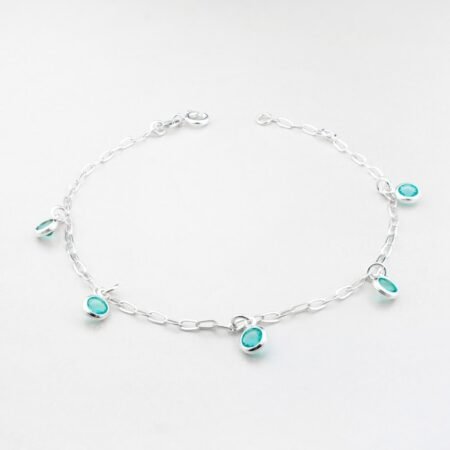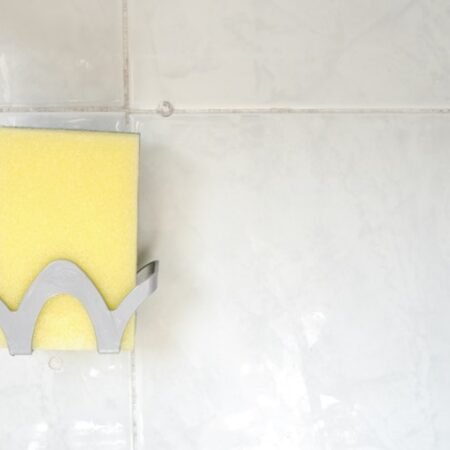Duct tape is a versatile and essential item to have in your camping gear for a multitude of reasons. Its strong adhesive properties and durable construction make it an ideal tool for quick fixes and repairs in the wilderness. Whether you need to patch up a tear in your tent, fix a broken strap on your backpack, or mend a hole in your sleeping bag, duct tape can come to the rescue.
Its waterproof nature also makes it a valuable asset in emergency situations, as it can be used to seal leaks in tents or tarps, or even to create makeshift bandages in the event of an injury. Additionally, duct tape is lightweight and compact, making it easy to carry in your backpack without adding extra bulk or weight. In the event of a camping emergency, having a roll of duct tape on hand can make all the difference in quickly resolving the situation and getting back to enjoying your outdoor adventure.
Duct tape is also incredibly versatile and can be used for a wide range of creative purposes in camping situations. From fashioning makeshift repairs to creating useful tools and accessories, the possibilities are endless. For example, you can use duct tape to create a makeshift clothesline for drying wet clothes, or to fashion a temporary handle for a broken water bottle.
It can also be used to secure loose items to your backpack, or even to create a makeshift sling in the event of an arm injury. The strong adhesive properties of duct tape make it an ideal tool for securing items in place, and its durable construction means that it can withstand the rigors of outdoor use. With a little creativity, duct tape can be an invaluable resource for solving a wide range of camping emergencies.
Key Takeaways
- Duct tape is a must-have for camping emergencies due to its versatility and durability.
- Creative uses for duct tape in camping situations include repairing tents, creating makeshift tools, and even removing splinters.
- When repairing gear with duct tape, it’s important to clean and dry the surface before applying the tape for a strong hold.
- Duct tape can be used for first aid in the wilderness by creating bandages, splints, and even removing ticks.
- Building shelter and making repairs with duct tape can be done by creating a tarp shelter, fixing broken poles, and patching holes in gear.
- Duct tape hacks for cooking and food storage in the outdoors include creating makeshift utensils, sealing food containers, and even repairing a broken cooler.
- Safety precautions and best practices for using duct tape in camping emergencies include avoiding using it directly on skin, storing it in a cool, dry place, and using it in a well-ventilated area.
Creative Uses for Duct Tape in Camping Situations
When it comes to camping emergencies, duct tape can be a lifesaver in more ways than one. In addition to its traditional uses for repairs and fixes, duct tape can also be used in a variety of creative ways to solve unexpected problems in the wilderness. For example, if you find yourself without a proper sleeping pad, you can use duct tape to create a makeshift cushion by wrapping it around a few layers of clothing or a pile of leaves.
Similarly, if you need to secure a splint for a broken bone, duct tape can be used to fashion a sturdy and supportive brace. Its strong adhesive properties make it an ideal tool for creating makeshift solutions in the absence of proper gear or equipment. Duct tape can also be used to create useful tools and accessories in camping situations.
For example, you can use it to fashion a temporary handle for a broken water bottle, or to create a makeshift repair for a damaged hiking pole. It can also be used to secure loose items to your backpack, or even to fashion a makeshift sling in the event of an arm injury. The strong adhesive properties of duct tape make it an ideal tool for securing items in place, and its durable construction means that it can withstand the rigors of outdoor use.
With a little creativity, duct tape can be an invaluable resource for solving a wide range of camping emergencies.
Repairing Gear with Duct Tape: Tips and Tricks
One of the most common uses for duct tape in camping emergencies is repairing gear. Whether you have a tear in your tent, a broken strap on your backpack, or a hole in your sleeping bag, duct tape can come to the rescue. When using duct tape to repair gear, there are a few tips and tricks to keep in mind to ensure that the fix is effective and long-lasting.
First, it’s important to clean the area that needs to be repaired before applying the duct tape. This will ensure that the adhesive sticks properly and that the repair is secure. Additionally, it’s helpful to apply the duct tape in layers, with each layer overlapping the previous one.
This will create a stronger and more durable repair that is less likely to come undone. Another tip for repairing gear with duct tape is to reinforce the repair with additional materials if possible. For example, if you have a tear in your tent, you can use sticks or branches to create a makeshift splint on either side of the tear before applying the duct tape.
This will provide additional support and stability to the repair, making it more effective in the long run. Finally, it’s important to keep in mind that duct tape is not a permanent solution for gear repairs. While it can provide a quick fix in an emergency situation, it’s always best to properly repair or replace damaged gear as soon as possible.
First Aid and Medical Uses for Duct Tape in the Wilderness
| Emergency Situation | Uses of Duct Tape |
|---|---|
| Tent Repair | Fixing tears, securing loose seams |
| Equipment Repair | Mending broken straps, patching holes |
| First Aid | Creating bandages, splints, or slings |
| Fire Starting | Using as a fire starter or kindling |
| Marking Trails | Using as trail markers or flagging tape |
In addition to its traditional uses for repairs and fixes, duct tape can also be used for first aid and medical purposes in the wilderness. Its strong adhesive properties make it an ideal tool for creating makeshift bandages or splints in the event of an injury. For example, if you have a cut or scrape that needs to be covered, you can use duct tape to fashion a temporary bandage by wrapping it around some gauze or cotton padding.
Similarly, if you need to secure a splint for a broken bone, duct tape can be used to fashion a sturdy and supportive brace. Its durable construction means that it can withstand the rigors of outdoor use, making it an ideal resource for first aid in camping emergencies. Duct tape can also be used for more advanced medical purposes in the wilderness.
For example, if you have a blister that needs to be protected, you can use duct tape to create a makeshift covering that will provide relief and protection while hiking or walking. Similarly, if you have a minor wound that needs stitches, but are unable to access proper medical care, duct tape can be used to close the wound temporarily until proper treatment is available. While these uses are not ideal solutions for medical emergencies, they can provide valuable relief and protection in the absence of proper medical supplies.
Building Shelter and Making Repairs with Duct Tape
In addition to repairing gear and providing first aid, duct tape can also be used to build shelter and make repairs in camping emergencies. Its strong adhesive properties make it an ideal tool for securing tarps or other materials together to create makeshift shelters or coverings. For example, if you find yourself without a proper tent or shelter, you can use duct tape to secure branches or poles together to create a basic frame, and then drape a tarp over the top and secure it in place with more duct tape.
This can provide valuable protection from the elements in an emergency situation. Duct tape can also be used to make repairs to existing shelters or structures. For example, if you have a tear in your tent or tarp, you can use duct tape to patch up the hole and prevent further damage.
Similarly, if you need to secure loose items around your campsite, such as securing a table leg or repairing a broken chair, duct tape can provide a quick and effective fix. Its durable construction means that it can withstand the rigors of outdoor use, making it an ideal resource for building shelter and making repairs in camping emergencies.
Duct Tape Hacks for Cooking and Food Storage in the Outdoors
In addition to its traditional uses for repairs and first aid, duct tape can also be used for cooking and food storage in camping situations. Its strong adhesive properties make it an ideal tool for securing items together or creating makeshift solutions for cooking and food preparation. For example, if you need to fashion a makeshift handle for a pot or pan over an open flame, you can use duct tape to secure a stick or branch to the side of the pot.
Similarly, if you need to secure food items together for storage or transport, such as wrapping up leftovers or creating makeshift containers, duct tape can provide an effective solution. Duct tape can also be used for more advanced cooking purposes in camping situations. For example, if you need to fashion a makeshift oven or smoker over an open flame, you can use duct tape to secure together metal sheets or other materials to create a heat-resistant enclosure.
Similarly, if you need to fashion makeshift utensils or tools for cooking or food preparation, such as creating tongs or skewers from sticks and other materials, duct tape can provide valuable support and stability. While these uses are not ideal solutions for cooking and food storage in camping situations, they can provide valuable relief and support in emergency situations.
Safety Precautions and Best Practices for Using Duct Tape in Camping Emergencies
While duct tape is an invaluable resource for solving camping emergencies, it’s important to keep safety precautions and best practices in mind when using it in outdoor situations. First and foremost, it’s important to remember that duct tape is not a permanent solution for gear repairs or medical purposes. While it can provide quick fixes in emergency situations, it’s always best to properly repair or replace damaged gear as soon as possible, and seek proper medical care when available.
Additionally, it’s important to use caution when using duct tape on skin or other sensitive areas of the body. The strong adhesive properties of duct tape can cause irritation or damage if not used properly. When using duct tape for first aid purposes, it’s important to ensure that the skin is clean and dry before applying the tape, and to remove it carefully and gently when no longer needed.
Finally, it’s important to remember that while duct tape is incredibly versatile and useful in camping emergencies, it’s not a substitute for proper gear or equipment. While it can provide quick fixes and solutions in emergency situations, it’s always best to be prepared with proper gear and supplies when venturing into the wilderness. In conclusion, duct tape is an invaluable resource for solving camping emergencies due to its strong adhesive properties and durable construction.
From repairing gear and providing first aid, to building shelter and making repairs, duct tape has countless uses in outdoor situations. By keeping safety precautions and best practices in mind when using duct tape in camping emergencies, you can ensure that it remains an effective tool for solving unexpected problems in the wilderness. Whether you’re an experienced camper or new to outdoor adventures, having a roll of duct tape on hand can make all the difference in quickly resolving emergency situations and getting back to enjoying your outdoor adventure.
FAQs
What is duct tape?
Duct tape is a strong, adhesive tape made of cloth and coated with a polyethylene resin. It is known for its versatility and ability to stick to a variety of surfaces.
How can duct tape be used for camping emergencies?
Duct tape can be used for a wide range of camping emergencies, including repairing torn tents, fixing broken gear, creating makeshift bandages, and even removing splinters.
Is duct tape waterproof?
Most duct tapes are water-resistant, but not completely waterproof. It can withstand some exposure to water, but prolonged submersion may cause it to lose its adhesive properties.
Can duct tape be used to repair a sleeping bag?
Yes, duct tape can be used to patch up small tears or holes in a sleeping bag. However, for larger repairs, it is best to use a specialized repair kit or seek professional help.
Is duct tape safe to use on skin?
While duct tape can be used to create makeshift bandages in emergency situations, it is not recommended for prolonged use on the skin as it can cause irritation and may be difficult to remove.













